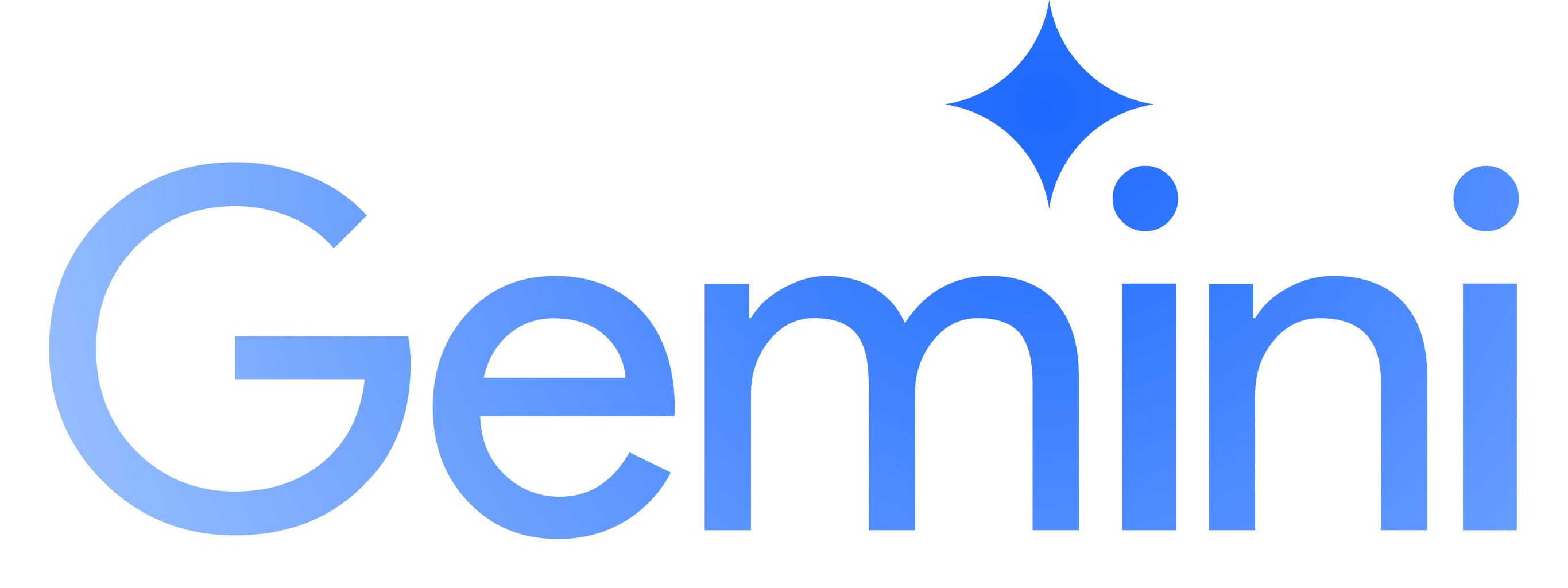Unlock the Power of Google Gemini
Google just dropped a bombshell in the AI space—Gemini is here, and it's rewriting the rules. With benchmarks outperforming GPT-4 in key areas like reasoning and coding, this isn't just another chatbot. It's a leap forward.
"Gemini represents a new era of AI—one where multimodality isn't a feature, but the foundation," says Sundar Pichai.
And he's right. Unlike traditional models, Google Gemini processes text, images, and even code natively, unlocking possibilities most businesses haven't even considered yet.
So, what does this mean for you? If you're using AI for content, development, or data analysis, Gemini's speed and accuracy could save hours per week. But only if you know how to leverage it.
In this guide, we'll break down:
- How Gemini's three model sizes (Nano, Pro, Ultra) fit different business needs
- Real-world applications—from automating reports to analyzing complex datasets
- Actionable prompts to get better outputs than ChatGPT
- The catch (yes, there is one) and how to work around it
Let's dive in. The future of AI isn't coming—it's already here. Are you ready to use it?
What is Google Gemini?
Google Gemini is a family of advanced multimodal AI models developed by Google DeepMind, designed to understand and generate text, code, audio, images, and video. As Google's next-generation AI, it succeeds models like LaMDA and PaLM 2 (which powered Bard).
Unlike traditional search engines, Google Gemini provides contextual, conversational responses, making it more intuitive for everyday use. Here are its key features:
- Text Generation: Draft emails, reports, or summaries with the Gemini AI model
- Information Retrieval: Get explanations on complex topics in simple terms
- Multimodal Input: Upload images, PDFs, or links for analysis
- Task Automation: Simplify research, planning, and content creation
Why Use Google Gemini?
1. Human-Like Interaction
- Communicate naturally, as you would with a person — no technical jargon required
- Get conversational responses instead of static search results
2. Time-Saving Efficiency
- Automate repetitive tasks:
- Draft emails, reports, or social media posts in seconds
- Summarize lengthy documents with a single prompt
- Reduce research time with instant, well-structured answers
3. Personalized Assistance
- Adapts to your needs:
- "Explain like I'm a beginner" for simple breakdowns
- "Give me bullet points" for quick takeaways
- Learns from your prompts to provide more relevant responses
4. Multimodal Capabilities
- Go beyond text:
- Upload and analyze images, screenshots, or PDFs
- Extract key information from documents without manual reading
5. Creative Brainstorming Partner
- Generate ideas for:
- Writing projects (essays, stories, presentations)
- Problem-solving approaches
- Planning (events, schedules, learning paths)
6. Always-Available Resource
- 24/7 access to information and assistance
- No appointments or waiting times
Google Gemini vs Traditional Tools
| Feature | Traditional Search | Google Gemini |
|---|---|---|
| Responses | List of links | Direct answers |
| Interaction | Keyword-based | Conversational |
| Customization | Limited | Adapts to your level |
| Task Help | Information only | Can create content |
Best Practices for Effective Use of Google Gemini
1. Creating Effective Prompts
The 3C Principle:
- Clear: State exactly what you need
Example: "Create a 3-day meal plan for vegetarian diets with 1,800 daily calories" - Concise: Avoid unnecessary words
Example: "Summarize this article in 5 bullet points" [Upload PDF] - Contextual: Provide relevant background when needed
Example: "Explain blockchain technology to a high school student"
Common Prompt Structures:
- "Write a [type of content] about [topic] in [tone/style]"
- "Compare [X] and [Y] using [criteria]"
- "Improve this text for [purpose/audience]: [paste text]"
2. File Uploads & Multimodal Use
When to Upload:
- Need analysis of contracts/reports → Upload PDFs
- Want information from an image → Upload photos/screenshots
- Working with data → Upload spreadsheets (CSV/Excel)
Pro Tip:
Always add an instruction with your upload:
"Identify the key deadlines in this contract" [Upload file]
3. Managing Output Quality
For Better Results:
- If output is too vague → "Be more specific about [detail]"
- If too technical → "Simplify for a non-expert audience"
- If too lengthy → "Condense to 3 main points"
Verification Protocol:
- Cross-check critical facts with authoritative sources
- For numerical data, request sources: "Cite references for these statistics"
- Use the "Google it" button to verify responses
4. Privacy & Data Handling
Safe Practices:
✔ Do use for general knowledge and public information
✖ Don't share:
- Personal identifiers (IDs, SSNs)
- Proprietary business data
- Sensitive documents
Remember:
Gemini improves using interactions, but your data isn't private
5. Advanced Techniques
Chaining Prompts:
- "Generate 5 blog post ideas about sustainable fashion"
- "Expand idea #3 into an outline"
- "Write the introduction for this outline"
Style Control:
- "Use professional/business tone"
- "Write in AP Style guidelines"
- "Adapt for social media (Twitter/Facebook/LinkedIn)"
Expand Your Knowledge
Dive deeper into technology and productivity with these related articles:
- Understanding IT – Build a solid foundation in Information Technology essentials.
- Introduction to Python – Learn Python, one of the most in-demand programming languages.
- Prompt Engineering: Writing Effective AI Prompts – Master the skill of crafting precise AI prompts for better results.
- Understanding Brain Rot in the Digital Age – Break free from digital overload and regain focus.
- Effective Study Techniques for Better Learning – Discover research-backed strategies to boost learning retention.
Test Your Gemini Knowledge
Ready to put your Google Gemini skills to the test? Take our AI Productivity Tools Quiz. Challenge yourself and see how well you understand Gemini's capabilities.

No comments yet. Be the first to share your thoughts!